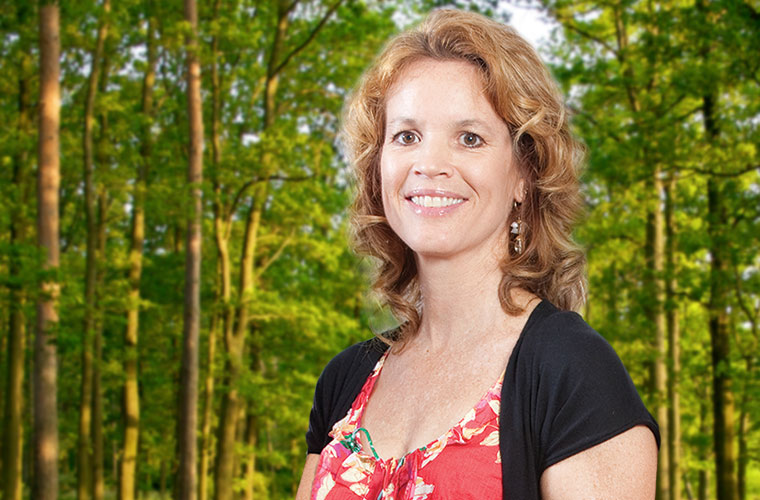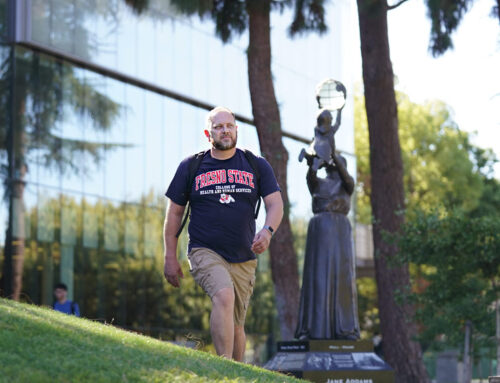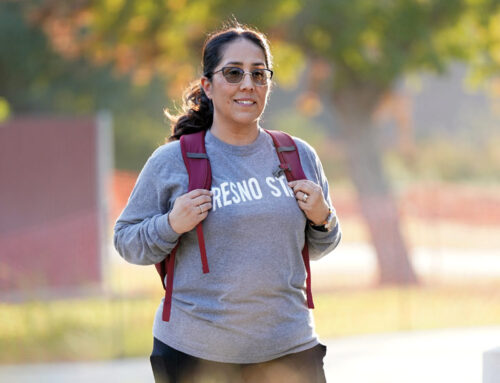Dr. Herzig shares easy tips on eating more fruits and vegetables
by Kathleen Rhodes Schock
We all know that fruits and vegetables are good for us, but it takes an expert on nutrition to explain why. To get the lowdown on healthy eating during the summer months, FresnoState Magazine sat down with Dr. Lisa Herzig, assistant professor of dietetics in the Department of Food Science and Nutrition at Fresno State.
FresnoState Magazine: Why are fruits and vegetables important?
Dr. Herzig: Along with the many different nutrients, meaning vitamins, minerals, fiber and of course calories, vegetables and fruits also provide high water content. Part of our hydration needs, which are especially important here in the Central Valley during the dry summer months, can be met through eating fruits and vegetables like cucumbers, tomatoes and cantaloupe. Fruits and vegetables also provide phytochemicals that help protect against free radical damage, which changes the structure of our cells. In the long term, this helps to protect against cancer. Vitamins found in fruits and vegetables also help to protect our skin, eyes, organs, brain function and energy production.
FSM: What percentage of our diet should be made up of fruits and vegetables?
Dr. Herzig: The Healthy Plate guidelines say that half of our plate should be fruits and vegetables. An easy way to think about the rest of the plate is a fist-size portion of starches and a fist-size portion of protein.
FSM: Do you have any tips on new ways to incorporate more fruits and vegetables into our diet?
Dr. Herzig: Add more vegetables to your soups, casseroles and pasta dishes. Add a lean protein and grain to your salad to make it a main dish. We always suggest eating within season, which is easy this time of year because such a wide variety of produce is available. If you shop at a farmers market, ask the grower for a sample. It’s a great way to discover something new. Another tip is to draw inspiration from the many ethnic groups represented in the Valley. In Indian culture, they will add cucumber and tomato to yogurt. In the Hispanic culture, they serve jicama, pineapple and cucumber with lemon or lime juice and chili pepper. There’s lots to explore.






